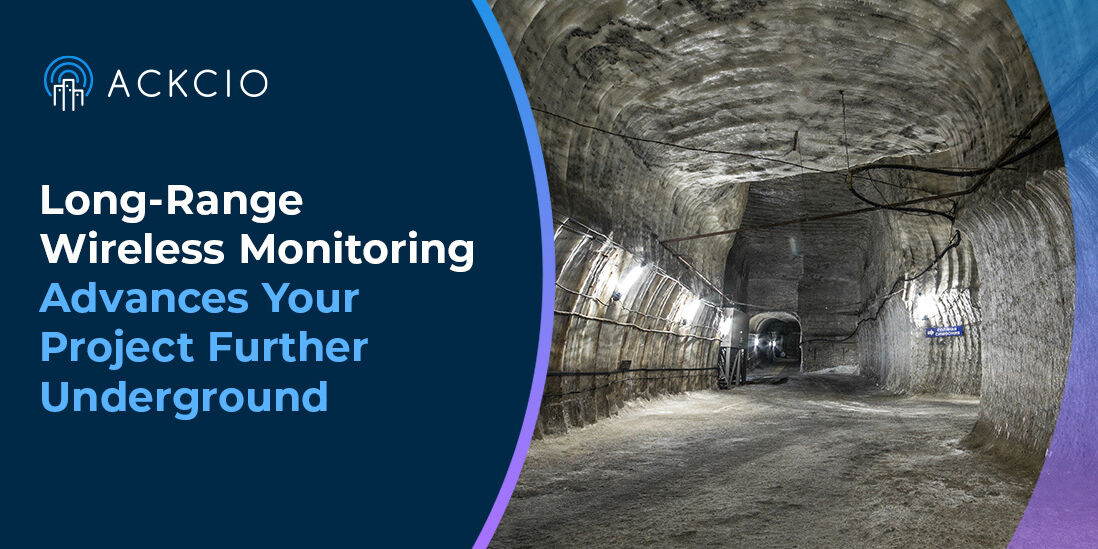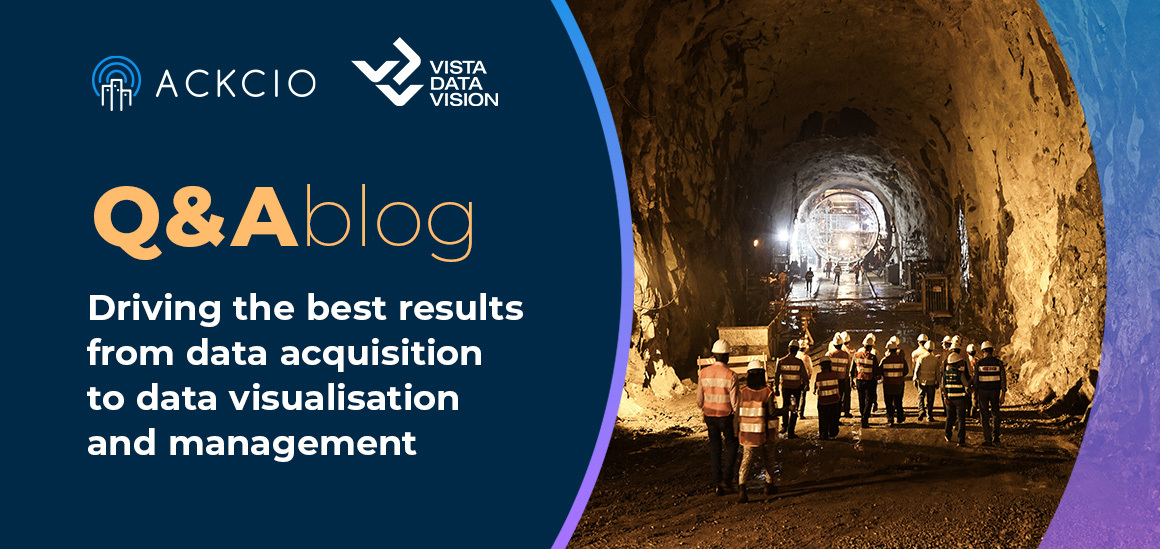Long-Range Wireless Monitoring Advances Your Project Further Underground

When it comes to long-range, wireless monitoring solutions, underground projects are the final frontier. While reliable, cable-free solutions have become the standard in many above-ground applications, most of these systems can’t overcome the unique challenges of tunnels, mines and other subterranean sites.
But a new, long-range solution is proving its reliability, durability and range in some of the most cutting-edge mining and tunnelling operations in the world. It is going much further and with less risk and cost than cable-based networks, manual monitoring, and even other wireless monitoring systems. From the project outset, right through to operations and even expansion, this new technology is dependably streaming real-time data without putting workers or assets at risk and for much less expense and hassle than the old ways.
Wireless solutions have gained traction in recent years due to their greater cost efficiency, data quality, data collection frequency, and minimal risk to worker safety. But star topology protocols have always been constrained by short transmission ranges in underground settings that effectively put a leash on their extensibility.
Wireless Range Challenges
In underground monitoring, the beginning and end of the data transmission chain are set. The engineers determine the sensor locations. At the other end, the gateway must be able to connect to power and a communications network, which often means it must be placed at or near the entrance to the mineshaft or tunnel.
It’s what happens in between the endpoints that makes all the difference.
Star topology wireless solutions, in which nodes must connect directly to the central gateway, are therefore limited by the transmission distance from the node to the gateway receiver.
The intense signal noise, or “scattering,” in a contained environment such as a tunnel or mineshaft significantly limits the length that a wireless signal can dependably be transmitted.
“With scattering, radio signals are bouncing all over the place, so it gets congested,” says Shaun Ahern, Global Sales Director at Ackcio, a global provider of long-range wireless data acquisition systems for industrial applications. “And that affects the range of each hop. This is why star networks cannot go very far underground because it’s an enclosed area and there’s a lot of noise. It’s a real challenge.”
Topology Matters
Ackcio Beam solution overcomes this constraint by using a mesh rather than a star topology.
In this configuration, the nodes don’t have to connect directly to the gateway. They can “talk” to each other, as well as to Repeater Nodes, along the chain.
“Because we can have up to 12 “hops” between our nodes and gateway receiver, the extendable range is much greater than any other product on the market,” Shaun says. “We can go much further and deeper.”
This was a significant advantage in the early stages of the Tuen Mun-Chek Lap Kok Link project, a highway construction in Hong Kong that needed monitoring over a large and complicated site, including an under-sea tunnel approximately five kilometres in length. Part of the massive Hong Kong–Zhuhai–Macau Bridge project, valued at over US$6 billion, the Ackcio Beam system was used to monitor vibrating wire piezometers and strain gauges deployed within both the undersea tunnel segment and the above-ground site location.
“This project is such a compelling example of how wireless monitoring is going further and enabling infrastructure projects that traditionally would have required kilometres of cable,” Shaun says. “Our client was able to ensure that the construction work proceeded smoothly without putting their workers at undue risk.”
A Cutting-Edge Test Case
Of course, even once an underground project is past the construction phase and up and running, connectivity continues to be a serious challenge.
A leading-edge gold and copper mine in Eastern Europe that’s been an avid adopter of emerging technologies was looking to automate readings from multi-point borehole extensometers (MPBXs). The owners wanted to limit workers making the risky and expensive trip underground to take manual readings. So they hired Ramjack, a full-service technology implementation partner to the mining industry, to find a solution that would connect to their existing WiFi network at the surface.
A wireless “star” topology network would not be able to go the distance that the mine required. They chose Ackcio for the project, installing Ackcio Analogue Nodes (BEAM-AN-S4), which have been reliably sending readings wirelessly to the Ackcio Gateway (BEAM-GW).
In the future, if the owner wants to extend the monitoring further and deeper into the mine, they can simply add new sensors and nodes to the existing system. And if they ever need to adjust the timing or frequency of readings, Ackcio’s two-way communications protocol allows them to do so remotely.
One Simple, Smooth Solution
Ackcio is always looking for ways to make things easier for its clients.
“Our team is really focused on seamless integration, so everything works within one network,” Shaun says.
Sensor-agnostic, Ackcio Beam is compatible with a wide range of sensor types produced by the industry’s leading brands, including Campbell Scientific, Measurand, RST, GEOKON and many more. Simply connect and commission your sensor, and start receiving real-time readings. At the receiving end of the system, the data transmitted by Ackcio is compatible with all major monitoring data software providers, including sensemetrics, IoTailor, Geodaisy®, Drishti and Vista Data Vision, among others.
The real test of any monitoring solution is the reliability of its data, especially when the unexpected occurs. Ackcio’s fail-safe recovery system prevents data loss, even in the case of a power or communications outage or another system failure.
If connectivity goes down, the gateway goes into low power mode. It stops sending data but continues to receive it from the nodes, which have onboard memory and continue sending readings.
“If there is a break in the chain, the nodes will continue reading the sensors until the power is back at the gateway and the network is up and running. Then they will push all of that data recorded during the downtime back to the gateway,” Shaun says. “You never lose data.”


